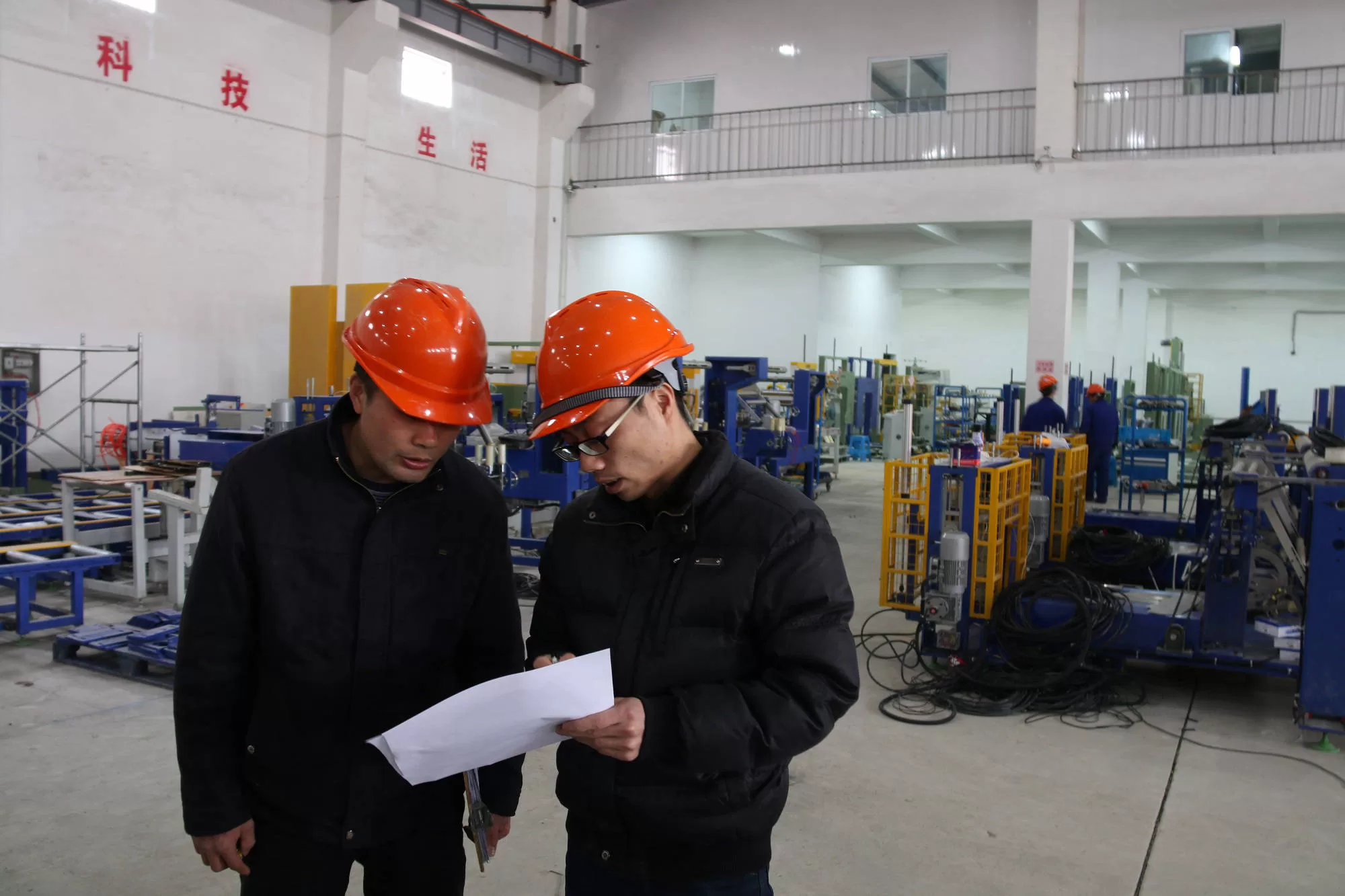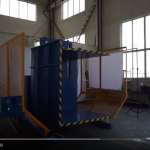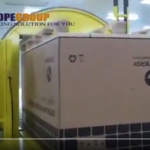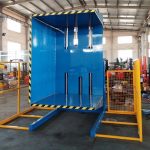The Ultimate Pallet Inverter Buyer’s Guide: Features, Costs, and Applications
- The Ultimate Pallet Inverter Buyer’s Guide: Features, Costs, and Applications
- 1. What is a Pallet Inverter?
- 2. Key Features to Look for in a Pallet Inverter
- 3. Applications of Pallet Inverters
- 4. Costs Involved in Buying a Pallet Inverter
- 5. Benefits of Investing in a Pallet Inverter
- 6. Factors to Consider Before Buying a Pallet Inverter
- Conclusion: Making the Right Choice for Your Business

When it comes to improving warehouse efficiency, safety, and overall productivity, pallet inverters play a crucial role. These machines are specifically designed to help businesses handle pallet exchange with ease, reduce manual labor, and increase operational efficiency. Whether you’re new to pallet inverters or considering upgrading your current equipment, this comprehensive buyer’s guide will cover all you need to know about the key features, associated costs, and practical applications of pallet inverters.
1. What is a Pallet Inverter?
A pallet inverter is a machine that allows operators to rotate pallets, typically 180 degrees, so that the load can be inverted or transferred to a different pallet. This is especially useful in industries where damaged pallets need replacing, goods need to be accessed from the bottom of a stack, or specific hygiene requirements are enforced, such as in food or pharmaceutical sectors.
The fundamental function of a pallet inverter is to flip loads securely, minimizing the risk of damage to goods and ensuring a safe work environment. It’s a must-have for companies dealing with high volumes of pallet exchange, particularly when manual handling would be inefficient or dangerous.
2. Key Features to Look for in a Pallet Inverter
Not all pallet inverters are created equal, and knowing which features to prioritize will make a huge difference in choosing the right equipment for your business needs. Here are the essential features to consider:
a. Rotation Capability
Most pallet inverters offer 180-degree rotation, but some models may allow for varying degrees of rotation depending on the requirements of your operation. For example, tilt functions or custom angles may be useful for certain industries.
b. Load Capacity
The maximum load capacity of a pallet inverter is another critical factor. Depending on the nature of your goods, you’ll need an inverter that can handle anywhere from 1,000 kg to 3,000 kg or more. Choosing the correct load capacity will ensure smooth and safe operations, without risking machine failure.
c. Size Compatibility
Ensure that the pallet inverter is compatible with the size of pallets you use. Pallet sizes vary across industries, and an inverter that can accommodate different pallet sizes (e.g., Euro pallets, standard pallets, custom sizes) will provide more flexibility.
d. Clamping Mechanism
Clamping systems are crucial to keeping the load secure during the inversion process. Look for pallet inverters with adjustable clamping mechanisms that can securely grip loads of varying sizes and materials without causing damage.
e. Automation Features
Automation is becoming increasingly popular in warehousing operations, and pallet inverters are no exception. Automated pallet inverters can reduce manual intervention, speed up processes, and enhance safety. Features such as automatic clamping, load sensors, and remote operation should be considered for businesses looking to streamline their workflow.
f. Durability and Material
The material and build quality of a pallet inverter will determine its longevity and performance. Heavy-duty steel frames and corrosion-resistant coatings are essential for ensuring the equipment can withstand constant use in a warehouse environment.
3. Applications of Pallet Inverters
Pallet inverters are highly versatile machines that find applications in a wide range of industries. Here are some of the most common uses:
a. Food and Beverage Industry
In industries with stringent hygiene requirements like food and beverage, pallet inverters are used to replace wooden pallets with clean plastic ones to avoid contamination. They help ensure compliance with safety standards without disrupting workflow.
b. Pharmaceutical Industry
Similar to the food industry, the pharmaceutical sector benefits from pallet inverters by swapping pallets quickly while maintaining hygiene and preventing contamination of sensitive materials.
c. Manufacturing and Logistics
Pallet inverters are invaluable in manufacturing and logistics operations where goods need to be accessed from the bottom of a stack or where damaged goods or pallets need to be replaced without unloading everything manually.
d. Cold Storage and Freezers
In cold storage facilities, pallet inverters help rotate frozen goods for first-in, first-out (FIFO) inventory control. This ensures older stock is used before newer stock, preventing spoilage and maximizing efficiency.
4. Costs Involved in Buying a Pallet Inverter
When it comes to purchasing a pallet inverter, the initial cost is just one part of the equation. Understanding the full scope of costs will help in making a more informed decision. Here’s a breakdown of the costs:
a. Initial Purchase Price
The cost of a pallet inverter varies based on its features, load capacity, and level of automation. On average, basic pallet inverters may start from around $8,000 to $10,000, while more advanced models with higher load capacities and automation features can range between $15,000 to $30,000 or more.
b. Installation Costs
Installation costs depend on whether the pallet inverter is a standalone unit or integrated into an automated system. Installation typically involves setup, calibration, and staff training, which could add another $1,000 to $3,000 to the total cost.
c. Maintenance Costs
Like any piece of industrial equipment, pallet inverters require regular maintenance to ensure optimal performance. Maintenance costs may include periodic inspections, lubrication, replacement of worn-out parts, and emergency repairs. Budgeting around $500 to $1,500 annually for maintenance is a reasonable estimate.
d. Energy Costs
Pallet inverters require power to operate, and energy costs should be considered, especially for businesses running 24/7 operations. Although pallet inverters are typically not energy-intensive, energy-efficient models can help reduce long-term operational costs.
5. Benefits of Investing in a Pallet Inverter
While pallet inverters do involve a financial investment, the long-term benefits often outweigh the initial costs. Let’s take a closer look at some of the key advantages:
a. Increased Efficiency
By automating the pallet exchange process, pallet inverters help businesses significantly reduce downtime and increase productivity. What used to take a team of workers several minutes can now be completed in a fraction of the time with a pallet inverter.
b. Enhanced Safety
Manual pallet exchange is not only labor-intensive but also risky. The use of pallet inverters reduces the need for workers to manually handle heavy loads, thus lowering the risk of workplace injuries such as back strain and accidents.
c. Reduced Product Damage
Pallet inverters ensure gentle handling of goods during the flipping or transferring process, reducing the likelihood of product damage. This is particularly important when dealing with delicate or high-value products.
d. Cost Savings
Over time, the combination of increased efficiency, enhanced safety, and reduced product damage leads to significant cost savings. Businesses can reduce labor costs, minimize product loss, and avoid costly accidents and downtime.
6. Factors to Consider Before Buying a Pallet Inverter
Before you invest in a pallet inverter, there are several factors you should evaluate to ensure you’re making the best decision for your specific needs:
a. Type of Goods Handled
Consider the nature of the goods your business handles. Are they fragile, heavy, or prone to damage? This will impact the type of pallet inverter you choose, as some models are better suited for handling delicate products, while others are designed for heavy loads.
b. Warehouse Space
Pallet inverters come in various sizes, and it’s important to assess the available space in your warehouse. For smaller spaces, compact models or mobile pallet inverters may be ideal. If you have ample room, a larger, more permanent installation might be the better option.
c. Frequency of Use
How often will you need to use the pallet inverter? If pallet exchanges are a daily or constant part of your operations, investing in a more durable and automated model may be more cost-effective in the long run.
d. Future-Proofing
As businesses grow and operational needs evolve, it’s important to choose equipment that can scale with your company. Look for pallet inverters that are versatile and can accommodate different pallet sizes or be integrated into automated systems down the line.
Conclusion: Making the Right Choice for Your Business
Investing in a pallet inverter is a smart decision for businesses looking to improve operational efficiency, safety, and overall productivity. With a wide variety of features and models available, it’s essential to carefully assess your specific needs before making a purchase. Consider the types of goods you handle, your warehouse layout, and how frequently the machine will be used. By doing so, you’ll ensure that the pallet inverter you choose delivers long-term value and improves the efficiency of your operations. In the long run, the right pallet inverter will help your business stay competitive and reduce operational costs.

Get Your Best Solution !








